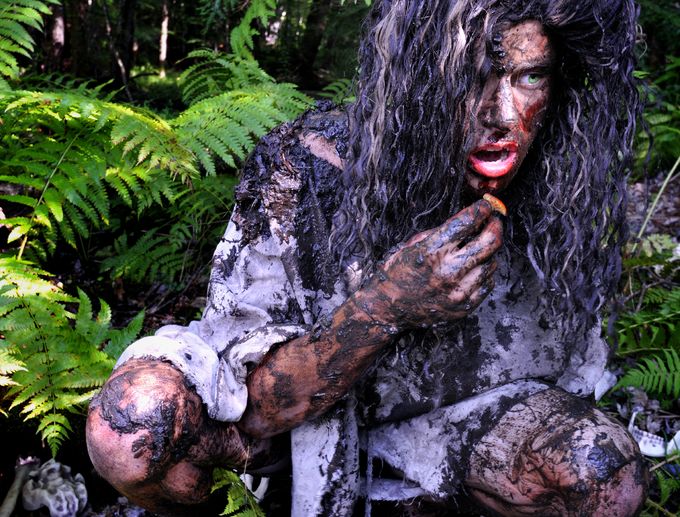
If you’ve already read our essential outdoor survival guide, you’ll know that food is a pretty important part of staying alive. The human body can go three weeks without food but, depending on the remoteness of your location, that might not be enough time to get back to civilisation and the warm embrace of a Pot Noodle.
And so, with that in mind, here’s everything you need to know about survival food. What can you eat? What can’t you eat? What food will keep you alive? What food is poisonous and should be avoided at all costs? You won’t find a Tesco Express in the Amazon Rainforest, so pay attention and learn everything you can about survival food.

Keep Your Energy Up!

It might sound like we’re stating the obvious here, but one of the most important things about survival food is that it keeps your energy up. Life is all about energy, and when your food stores run low everything will become a struggle. Try constructing a survival shelter on an empty stomach, for example, and you’ll see what we mean.
Eat food you’ve brought with you, or find some if you have to (we’ll go into that later on), and keep your energy levels up. If you can’t move, if you can’t think; you won’t be able to get on with the vitally important stuff like staying alive.
Foods That Are High In Energy

The world is filled with foods that are high in energy and while some might not be readily available in the wild, it’s important you get as clear a picture as possible. In general, it’s recommended that you combine items from the following food groups in order to banish tiredness but, of course, in the wild this isn’t always possible.
- Potatoes, Brown Bread, Rice, Pasta
- Fruit and Vegetables
- Milk And Dairy Foods
- Meat, Fish, Eggs and Beans
How To Cook In The Wild

When you’re trying to survive in the wild, nobody is expecting you to turn your life-saving food supplies into a gourmet meal.
This guide isn’t ‘everything you need to know in order to become Heston Blumenthal’, it’s just everything you need to know about survival food. When it comes to cooking, in extreme circumstances, the rules are relatively simple.
Make A Fire
Unless you’re planning on living off gazpacho soup, you’re going to need a fire. The ability to create fire, and utilise it for a purpose, is one of the key differences between humans and wild animals. It’s primal, and it sits at the heart of the evolutionary process.
This is pretty basic stuff but fire gives off heat energy. Not only will this provide you with warmth if the weather turns, it will also give you the chance to turn your pile of survival food into something remotely edible.

The internet is bursting at the seams with guides on how to make a fire, and it’s worth acquainting yourself with some of these before heading off into the wilderness. Even better, why not sign up to a survival course.
When he’s not busy turning the inside of a camel into a sleeping bag, or squeezing drinkable moisture from animal faeces, Bear Grylls runs a survival academy (called, unsurprisingly, Bear Grylls Survival Academy).
Learn how to make a fire, cook your food, and keep on living.
Check Meat Is Cooked

When you’re out in the wild, trying to survive, you obviously want to minimise the chances of the situation getting worse. One thing that certainly won’t help your odds of survival is the contracting of food poisoning. If you’re ill, you won’t have energy; and if you don’t have energy you won’t be able to survive. Everything is connected.
Check meat is thoroughly cooked, before consuming. If an animal has started to rot, do not attempt to cook/consume. No matter how well you cook it, the animal will likely still contain potentially lethal toxins. If you’re unsure about something, do not eat it. It’s important to eat, but equally as important to eat things that won’t make the situation worse.
Hunting And Foraging For Food

For many of us, in modern society, the thought of hunting down our dinner, stripping it of it’s fur/feathers, and then cooking it is pretty horrifying. We like our meat to be vacuum packed in a supermarket; we don’t like to think of where it’s come from (a living animal).
As we’ve already mentioned, however, there aren’t any supermarkets in the wild. So if you want to eat meat, you’re going to have to source it for yourself. Most people don’t know the first thing about killing animals and, to be honest, neither do we.
Fear not, however, because there are courses that can be taken; ones on hunting, tracking and trapping skills (like this one, from Wild Spirit Bushcraft).
Insects

Almost as horrifying as the thought of killing for food, if not more so, is the thought of eating insects and creepy-crawlies. But insects, believe it or not, make for a highly nutritional survival food source.
You might have to pluck up your courage a bit, in the style of a Z-Lister on ‘I’m A Celebrity…’, but eating insects might just be the difference between life and death. They’re undoubtedly an excellent outdoor survival food, although you will have to eat more than one of them to get any sort of benefit.
Interestingly, it is recommend that people with a shellfish allergy should not eat insects. While most insects are OK to eat raw, they are far more palatable after being cooked. Wrap the insects in leaves, and boil or roast them over a fire if you can. This will kill bacteria, and render the proteins more digestible.

Of course, most environments contain things that are completely inedible. With that in mind, you should avoid eating bugs that are covered in fuzz. According to experts, bees and wasps are safe to eat if you remove their stingers beforehand. Keep an eye out for slow-moving insects, out in the open; these are likely to be poisonous.
Disease-carriers, such as flies and mosquitoes, should never make an appearance on your survival food menu. Likewise, do no eat bugs that emit a powerful odours.
Berries

Before you chow down on some berries in the wild, it’s important you’ve got a big wealth of survival food knowledge stored up in your brain-box. This will help you make the right decision, when the time comes, and prevent the situation from getting worse (by eating something poisonous).
The clever-old internet is filled with information on the berries you should steer clear of, as well recommendations on edible berries. If you’re ever in doubt, remember to keep it out…of your mouth. Do as much as research on survival food, as is humanly possible, and turn yourself into some sort of berry-spotting machine.
Mushrooms

When people think of outdoor survival food, they often picture themselves scrabbling around in the dirt cutting up mushrooms. And while mushrooms are a great outdoor survival food, it’s important to understand them a bit before you hit the forest floor and treat it like a bizarre all-you-can-eat mushroom buffet.
There are so many different types of mushroom that learning them all would be nigh-on impossible. That being said, you can do a lot worse than familiarising yourself on a basic level with a wild mushroom guide (such as this one, from Wild Food UK).
These guides contain lists of edible and poisonous mushrooms and, perhaps most importantly, useful photographs ideal for comparisons. If you happen to have one of these guides on your person, while trying to survive in the wild, it could make all the difference.
Survival Food Shopping List

So, hypothetically, if you could visit a supermarket before attempting to survive in the wild what would be essential items for the shopping list? Of course, realistically, you won’t get the chance to stock up in Asda before getting shipwrecked upon a tropical island but the following information might just enhance your survival food knowledge (pay attention).
If, for example, humanity ever hovers on the brink of nuclear war/ a zombie apocalypse be sure to have some of these food items stored up in your survival bunker/backpack.
Canned Fish (Tuna/Salmon)
Rich in proteins and healthy fats like Omega 3s. No need to cook it either, you can eat this straight from the tin.

Brown Rice
High in protein and calories, as well as important vitamins and minerals. Because it’s a dry, non-perishable, food it also has a long-shelf life.

Nuts
Peanuts, almonds, sunflower seeds, and a variety of other nuts/seeds usually sold in the supermarket bulk foods section are packed with essential minerals and vitamins, as well as containing a decent amount of protein and fatty acids. They’re a great survival food.

Beans
Beans are normally high in calories. They contain a good amount of protein, as well as vitamins and minerals that could be essential to your long-term survival.

Peanut Butter
Not just your dad’s favourite accompaniment to toast, peanut butter has many qualities that justify its inclusion on a list of essential survival food items. For example, it’s packed with protein and essential fatty acids. Interestingly, just a few spoonfuls of peanut butter, everyday, could help a person survive for a sustained period.

Trail Mix
There’s a reason trail mix is loved by hikers so much. The simple sugars in the raisins, chocolate, and dried fruits can be a mood enhancer as well as a source of short term energy. Trail mix is a brilliant survival food.

Energy Bars and Chocolate Bars
Chocolate offers you a quick, yet short-lived, energy boost and a load of potentially life-saving calories. The more specialist energy bars offer more protein and a wider range of nutrients. Eating chocolate to stay alive is pretty much the dream, is it not?

Beef Jerky
Dried meat is a proven survival food. It was used, for example, by both Native Americans and American pioneers. It is also eaten by a variety of tribes, the world over.

Instant Coffee
Not necessarily an essential survival food, but it’s certainly worth having some in your backpack. A perfect energy booster, and mood enhancer.

Powdered Super Greens/Sea Vegetables
Powdered super greens might not immediately spring to mind, when thinking up items for an essential survival food shopping list, but having some with you is certainly not the worst idea in the world.
They’re a “super food” capable of boosting immunity, assisting tissue repair and wound healing, and providing the body with a variety of important vitamins and nutrients.

You May Also Like:
10 Essential Pieces of Survival Gear You Should Always Carry
Essential Outdoor Survival Guide – Everything You Need To Know